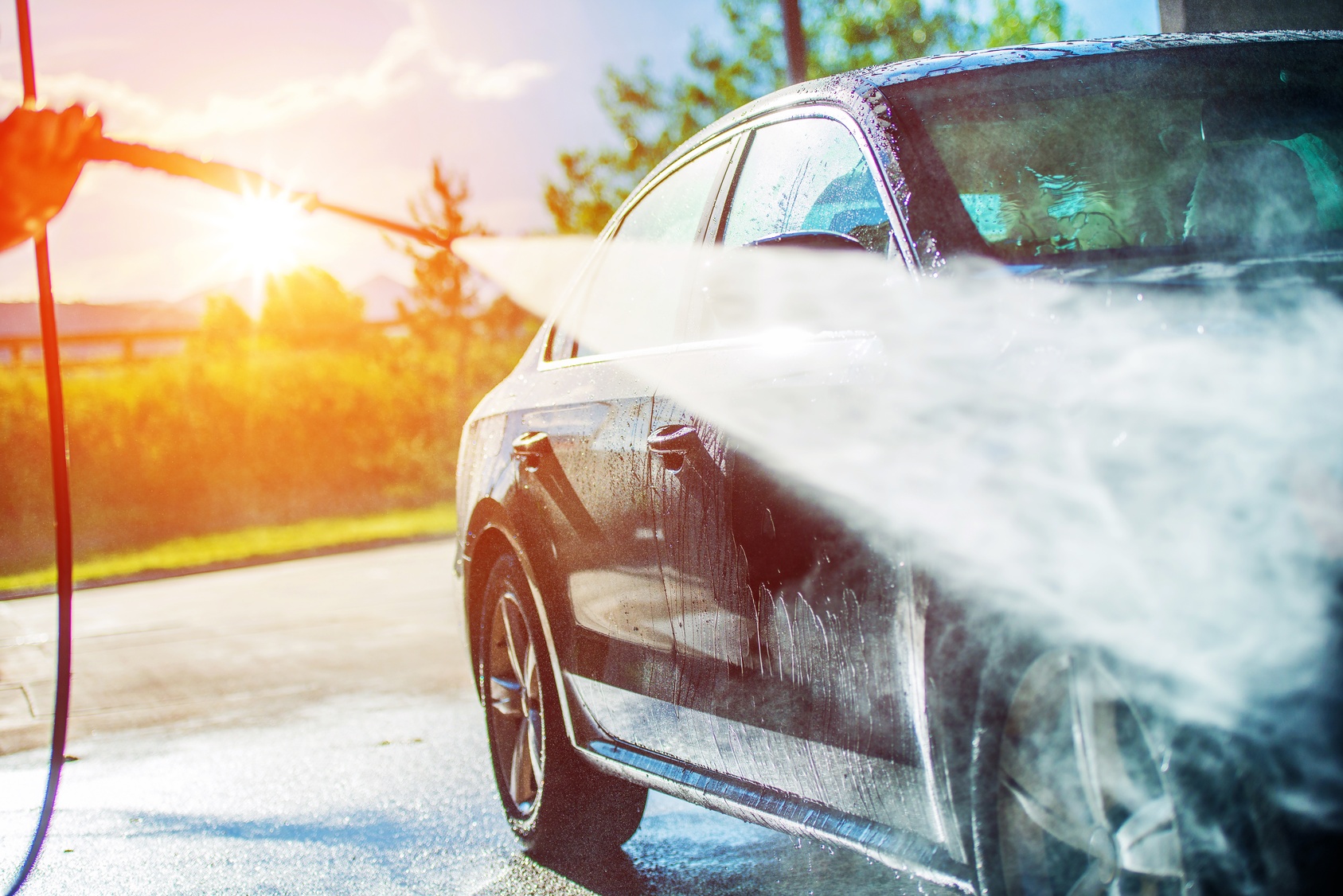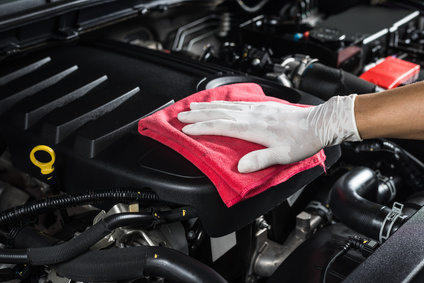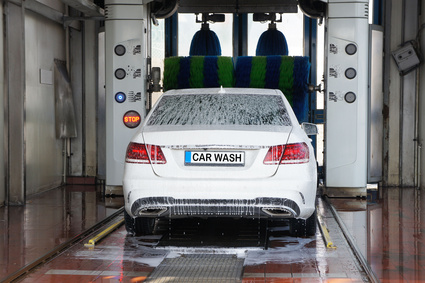Cars are exposed to weather conditions and the elements at all times of the year. While in winter road salt and slush leave behind a film of dirt on the paint, wheels and plastic parts, UV radiation and insects afflict the vehicle in summer. Regular car maintenance lets it shine again quickly and also contributes to value retention. There are a few things worth noting in this regard, and we would like to address them on this site. Whether it's spring cleaning or a weekly wash, we'll give you tips here for car washes and for undercarriage and engine cleaning.
Since in most cities and municipalities, washing a car outside is not permitted, a car wash generally constitutes the only way to have a car cleaned. At a car wash, the driver remains seated in the vehicle, which is then drawn through a hallway and washed. Whether you choose a car wash or do it yourself, close all the windows and if necessary the sun roof, to prevent water damage to the interior. If possible, the outer mirrors should be folded and the antenna unscrewed. Convertibles should avoid car washes and instead choose a more gentle hand wash.
 |
In spring a total wash which thoroughly frees the car from the residue of winter is recommended. This includes first a pre-wash in which the dirt on the rims and wheel housing is removed. After this comes the undercarriage wash, because sludge and road salt have attached themselves tenaciously here. Treat your car to preservation which seals the paint. An interior cleaning completes the spring cleaning.
In summer there is the danger that insects, resin and UV rays will become paint killers. Wash these deposits off as quickly as possible, so that the paint doesn't become irreparably damaged or get dull patches. If possible, wait for bad weather when driving to the car wash. On a rainy day, secretions from trees on the car are soaked and thus easier to remove. Incidentally, car washes with cloths instead of brushes are more gentle. While there is no risk of scratches, the brushes can leave behind lines which look like scratches. In fact, this is another advantage of washing during bad weather: experience has shown that the brushes and cloths are cleaner on such days. What's more, you generally don't have to wait long for them.
If you've decided on sealing with wax, you should remove the wax from the windscreen wiper rubber. After washing outside, the interior is next. Over time a layer of dirt develops on the inside of the windscreen, which can lead to visual obstructions, so clean the windscreen regularly with window cleaner and then wipe it dry.
In addition to a normal car wish, it's advisable to carry out engine cleaning from time to time. There are several reasons to do this:
If you detect the loss of oil or other liquids from your car, you should find out the cause. In order to do this it's necessary to clean the engine area in order to be able to locate the defect. With engine cleaning there are a few general things to keep in mind. Only proceed with this when the engine is cold, otherwise if the hot engine block comes in contact with cold water it could lead to costly damage. Furthermore, electronic components such as the control unit should not come into contact with water, in order to avoid a short circuit.
 |
Experienced drivers can do an engine clean single-handedly. The primary concern: an oil separator and a good cleaning agent. Uncover the alternator and if necessary the distributor cap. Then spray on the engine cleaner and let it take effect for a few minutes. With a brush you can remove deposits even from areas which are hard to access. With a high pressure cleaner (set it to minimum jet pressure!) the loosened dirt is rinsed off - you mustn't use it on electronic components though - and then the engine must be left to dry well. You can generally find an oil separator at special washing places for cars - whereas engine cleaning on your own property or in the street is prohibited. Speaking of prohibited: some car manufacturers prohibit engine cleaning with a high pressure steam cleaner - under threat of loss of warranty.
If you want to play it safe, leave the engine cleaning to a professional who specialises in it. Otherwise it could be that the engine will no longer start, or run smoothly. Another (somewhat more expensive) alternative is to clean with dry ice, which precludes water damage. In addition, one should invest a few euros in engine sealant (no wax). This has no visual effect, but it protects the engine from moisture on the inside.
When driving to the car wash, the question of the right option arises for many drivers. Is basic maintenance enough, or should the undercarriage also be cleaned? As a general rule only the visible surface needs to be cleaned- once a month, more often in winter if necessary.
 |
However, particularly in the colder times of year, road salt residue gathers on the undercarriage, and this can affect the material. In this case, washing the undercarriage is particularly worthwhile. However, this can also cause damage, and it should rather be done manually.
At a car wash, steam is sprayed against the undercarriage with high pressure. This could get into moving mechanical parts or the electronics, and the car may no longer switch on. This should be avoided at all costs. Furthermore, in winter salt-containing water encourages corrosion. If a professional cleans the undercarriage, he can also check for defects, which is recommended particularly with second-hand vehicles.
Rainy weather is generally the most convenient and gentlest opportunity for cleaning the undercarriage, since the water splashes the car clean. Aside from that, it's quite enough to clean the underside of the car carefully two or three times a year.